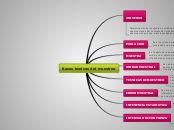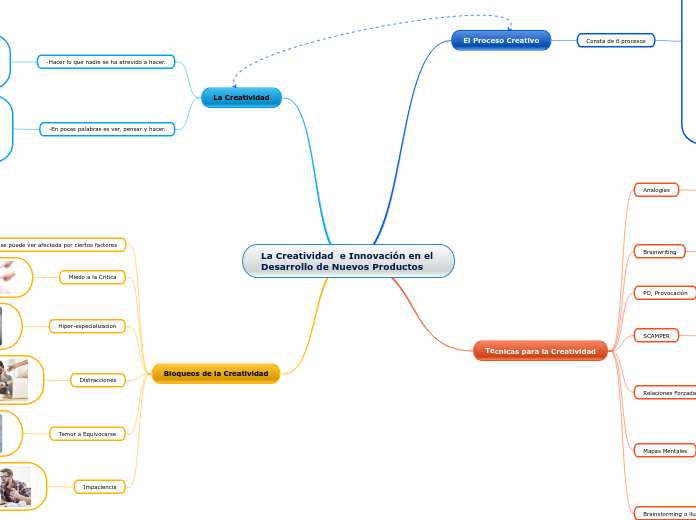EL TEST "DOS PERSONAS"SU UTILIZACION EN LA DETECCION DE VULNERAVILIDAD SOMÁTICA.ESTUDIO DE LAS PAUTAS GRAFICAS Y VERBALES
Type in the name of the multiple-perspectives text.
Example: Bridge to Terabithia by Katherine Paterson
PARTES
Identify an important issue from the text that is being presented from different angles. Type it in.
Example: Jesse's drawing talent.
CONSIDERACIONES
FINALES
La naturaleza específica de cada instrumento lo hace más o menos útil en la captación de fenómenos determinados.
Así las técnicas proyectivas verbales temáticas como el test de Apercepción Temática (TAT) o el test de relaciones objetales (TRO), han mostrado su capacidad de poner en evidencia las características particulares que adopta el discurso en las personas cuya organización mental se representa deficitaria en las capacidades de simbolización y de mentalización
.
CONCLUSIONES
GENERALES
En el rasgo diferencial más importante puede hallarse en el estilo defensivo, en la medida en que la utilización de mecanismos prerepresión y la adherencia a la realidad externa; aparecen privilegiados en el grupo c/a corroborando así las principales líneas teóricas de la psicosomática psicodinámica.
ARTICULACIOM TEORICA
DE LOS RESULTADOS
D. Liberman transformó el
eje de análisis al considerar
que la verdadera patología
no está constituida por la
somatización; sino por la
sobreadaptación resulta
egosintónica.
MECANISMO DE DEFENSA
EN EL RELATO
La creación de nexos lógicos al servicio del origen
El cuidado por la coherencia y el desenlace de la historia de buena calidad
El poder del pensamiento racional.
ROLES
La disociación en el grupo c/a aparece como significativa, ya que los procesos disociativos están presentes en el mecanismo de desmentida.
FRADO DE
DIFERENCIACION
Se evidencia que en ambos grupos predomina un vínculo simétrico heterosexual de tipo sexual amoroso, sin embargo; el vínculo fraterno es prevalente en el grupo c/a.
AREAS DE
CONFLICTO
El 20% de los casos, presenta dificultades en la diferenciación de las figuras, sea por:
Imágenes especulares.
Imágenes fusionadas.
Seco no diferenciado.
GRADO DE
HUMANIZACION
El estudio, el dato significativo que arroja:
Es que en el 49% de los sujetos c/a qué
evidenciarán zona de conflicto, la zona
referida es coincidente con el área
involucrada en la afección somática, en
la primera y segunda figura.
ASPECTOS
SIGNIFICATIVOS
VERBALES
Represión como defensa prevalente.
Clara diferenciación figura - fondo.
Figuras humanas vestidas.
No transparencias.
No falle la perspectiva.
Buena delimitación de la figura respecto a la hoja.
DESCRIPCION
DEL PROYECTO
Decide on the fourth point of view
Type in the name of the last character whose perspective on the issue you are going to present.
Example: Leslie Burke, Jesse's new next-door neighbor, and best friend.
Se analizaron 180 protocolos del test "Dos personas"
Point of view
Type in a relevant quote that highlights the character's point of view. Try to follow a citation format: author's name, chapter, and page.
Example: I can't get the poetry of the trees,' he said. She nodded. Don't worry,' she said. You will someday. He believed her.' (Paterson, 4. 24)
100 sujetos entre 25 y 35 años con presencia de afecciones somáticas que no se encuentran bajo tratamiento psicológico
80 sujetos entre 25 y 35 años sin presencia de afecciones somáticas (s/a) y que tampoco están en tratamiento psicológico.
PUNTO DE VISTA
VERBAL
Whose character does the third point of view belong to?
Type in his/her name.
Example: Mr. Aarons, Jesse's father.
La parte verbal del test propone al sujeto:
el trabajo adicional de imaginar una historia
a partir de un soporte material representado
por su propio dibujo.
What does the character think, say or do that suggests their perspective on the issue?
Type in a quote and try to maintain the citation format.
Example: 'He would like to show his drawings to his dad, but he didn't dare. (...) He'd thought his dad would be pleased. He wasn't. What are they teaching in that damn school? he had asked.' (Paterson, 2.8)
PUNTO DE VISTA
GRAFICO
Decide on the second point of view
Name the character (it can either be the main character or one of the supporting characters) whose point of view you are presenting.
Example: Miss Edmunds, Jesse's music teacher.
El grado de humanización representado
por la complejidad y la integración de
las figuras humanas.
Type in a quote that points out the character's position about the issue.
Try to follow a citation format: author's name, chapter, and page.
Example: 'She said he was unusually talented, and she hoped he wouldn't let anything discourage him.' (Paterson, 2. 8)
JUSTIFICACION
Esta investigación tiene como objetivo
encontrar ítems específicos en la
producción gráfica.
El test "Dos personas" se origina de la técnica proyectiva de la figura humana con ciertas variaciones como cuatro consignas en vez de una que tiene el DFH.
INTRODUCCION
Decide on the first point of view you are going to present.
Type in the name of the character (it can either be the main character or one of the supporting characters) whose point of view belongs to.
Example: Jesse Oliver Aarons, Jr., the main character of the novel, a fifth-grader living in a rural Southern area.
El uso de técnicas proyectivas gráficas
en la investigación de sujetos con
padecimientos somáticos es escasa
y es el motivo de esta investigación
Type in a relevant quote that highlights the character's point of view towards
PARTES.
Try following a citation format: author's name, chapter, and page.
Example: 'Jesse drew the way some people drank whiskey. (...) Lord, he loved to draw. (...) When he was in first grade, he told his father that he wanted to be an artist when he grew up.' (Paterson, 2. 7)
donde se implementa el test "Dos personas"
realizando muestra de sujetos
con afecciones somáticas y
otra muestra sin afecciones.









